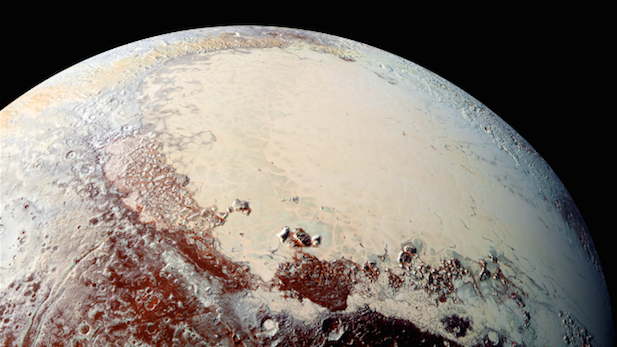 New Horizons captured this image of Pluto's glacial ice cap in July 2015.
New Horizons captured this image of Pluto's glacial ice cap in July 2015.By Melissa Sevigny, Arizona Science Desk
Pluto’s largest moon Charon has a dark red splotch on its north pole. In a new study published in the journal Nature, a planetary scientist at Lowell Observatory in Flagstaff explains why.
Will Grundy is a mission scientist for NASA’s New Horizons spacecraft, which flew by Pluto and Charon last year. He’s the lead author of the paper that explains how the red color forms. The process starts when Charon’s gravity steals some of Pluto’s atmosphere.
“It bounces around on the surface of Charon, and if it finds a place that’s cold enough it’ll actually stick,” Grundy says. “The only place that’s cold enough is the winter pole.”
So frozen methane piles up at Charon’s pole. Some of it is damaged by sunlight and transforms into huge, messy molecules called tholins. This material is red, and it’s too heavy to vanish back into space when the temperature warms. Grundy says it builds up slowly, like layers of spray paint.
He says this chain of events isn’t seen anywhere else in the solar system.


By submitting your comments, you hereby give AZPM the right to post your comments and potentially use them in any other form of media operated by this institution.